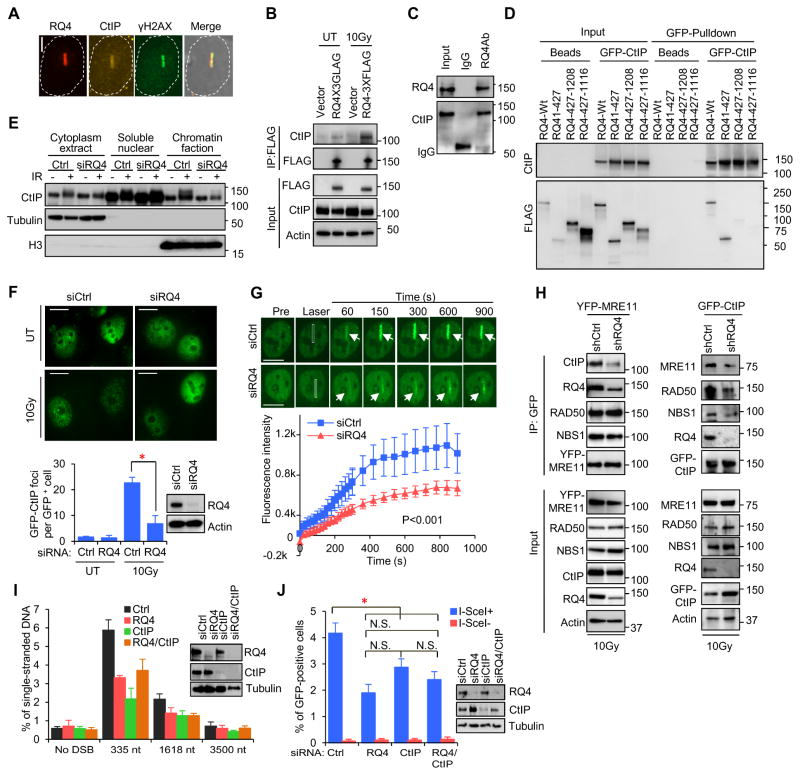Figure 3.
RECQL4 promotes CtIP recruitment to DSBs for DNA end resection and HR repair. A. Co-localization of endogenous RECQL4 and CtIP at laser-induced DSB tracks. Bar, 5 μm B. Co-IP of CtIP with RECQL4 in response to IR. C. In vitro co-IP analysis of recombinant RECQL4 and CtIP. D. The N-terminus of RECQL4 interacts with CtIP. E. Subcellular distribution of CtIP in control and RECQL4-depleted U2OS cells 10 min after IR. F. GFP-CtIP foci in the control and RECQL4-depeted U2OS cells 30 min after IR. Bar, 10μm. G. Recruitment of GFP-CtIP to DSB tracks in control and RECQL4-depeted U2OS cells. n=29. Bar, 10 μm. H. RECQL4 supports the interaction between MRN and CtIP. Western analysis of indicated proteins pulled-down with YFP-MRE11 or GFP-CtIP from control and RECQL4 knockdown HEK293T cells 10 min after IR. I. Quantification of ssDNA generated at DSB1 in AID-DIvA U2OS cells after knockdown of RECQL4 and CtIP. J. HR repair assay after knockdown of RECQL4 and CtIP in DR-GFP U2OS cells. Error bars for I and J represent SEM from three independent experiments. The IR dose is 10Gy. See also Figure S2, Figure S3 and Table S1.

